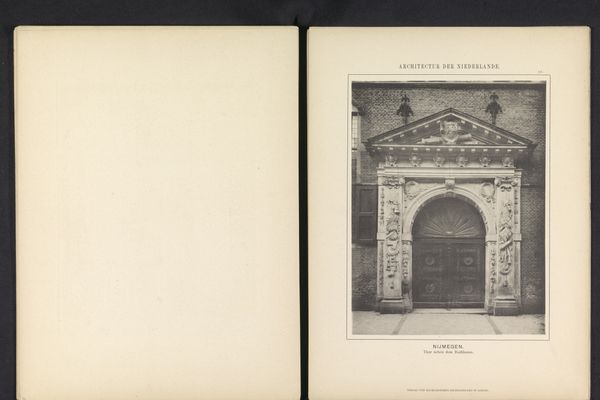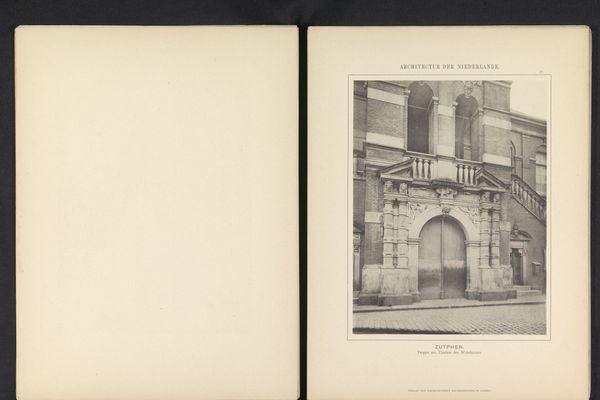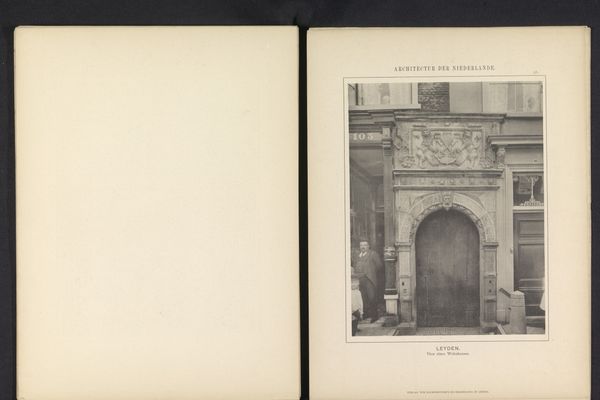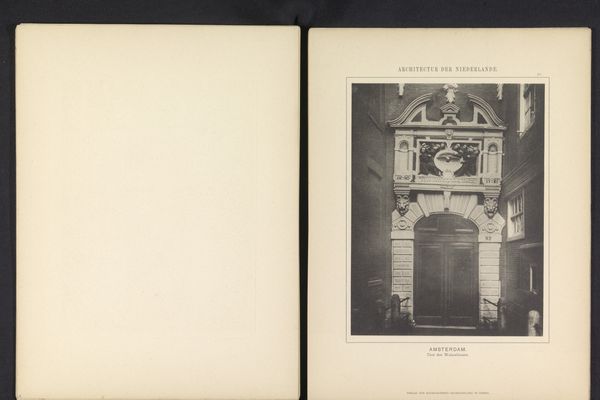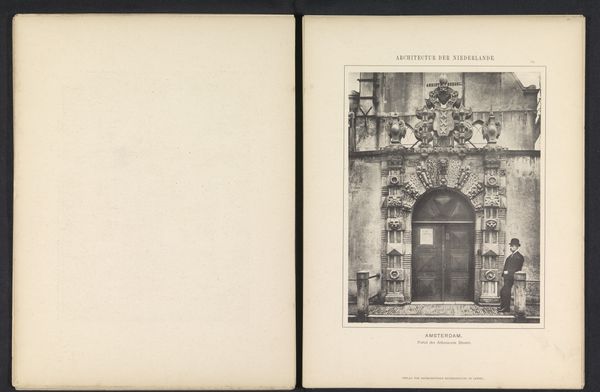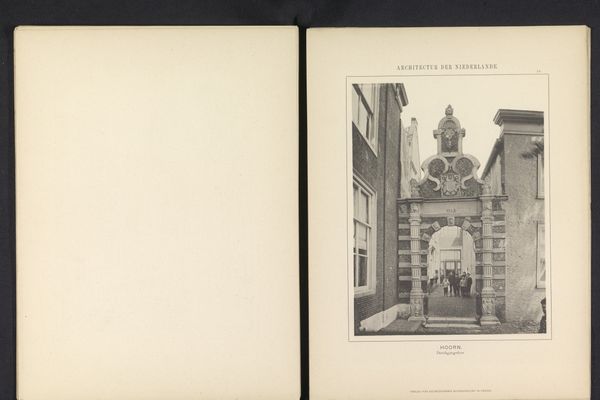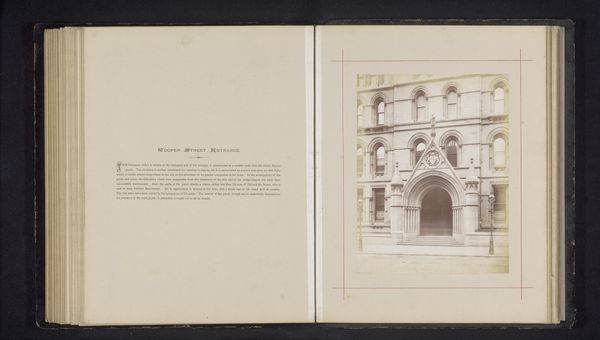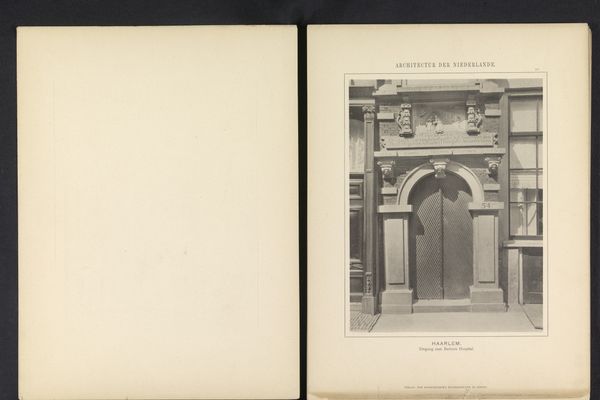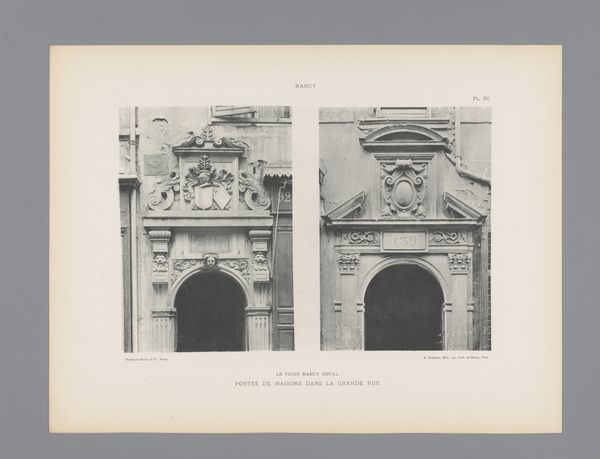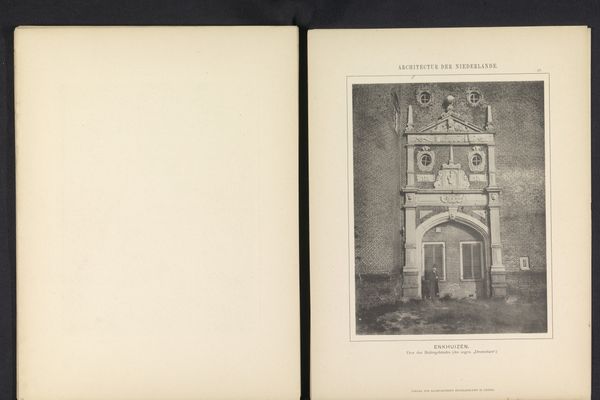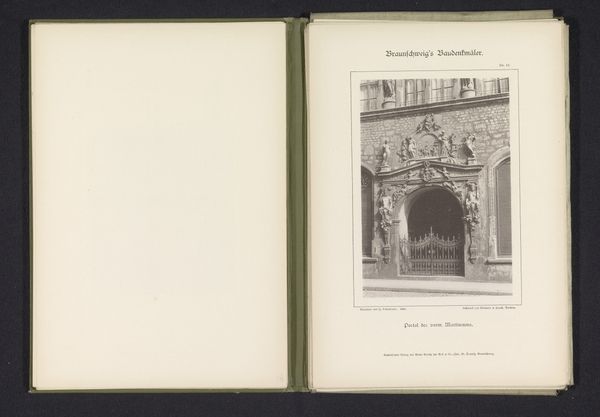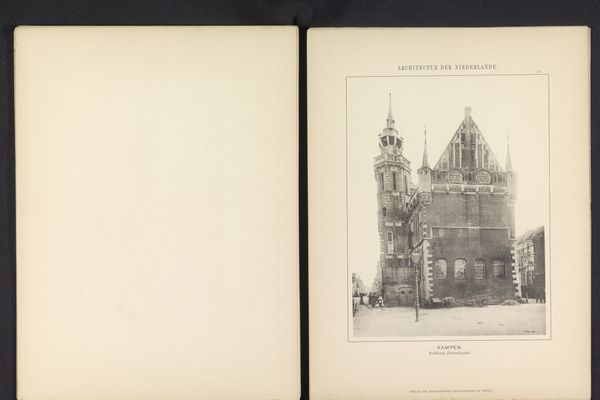
print, photography, architecture
#
dutch-golden-age
# print
#
landscape
#
photography
#
architecture
Dimensions: height 257 mm, width 196 mm
Copyright: Rijks Museum: Open Domain
Curator: Hmm, I feel a certain stoicism radiating from this image. It’s rather imposing. Editor: It's interesting that you pick up on that. Let me introduce you to "Gezicht op de poort van het Frans Loenenhofje in Haarlem," an anonymous photographic print housed here at the Rijksmuseum. We believe it was captured sometime before 1894. Curator: So, almost a time capsule, wouldn't you say? This perfectly symmetrical gateway dominates, really demanding your attention with its arch, its keystones, its determined door. All stone and brick! Editor: Absolutely. Notice how the photographer has chosen this close-up perspective, focusing sharply on the intricate details of the gate. The geometric volumes—cubes, cylinders, and the arch—structure the image and emphasize solidity. Curator: And what about the light, filtering just so? It softens what could easily become cold. Almost… wistful, no? Knowing what lies just beyond this portal—likely a hidden garden, wouldn’t you suppose? A tranquil inner world. Editor: That interplay is so significant, that contrast of heavy ornamentation and serene retreat. Technically speaking, we could delve into a study of the image’s chiaroscuro and the way in which this tonal variation impacts our reading of space and form. Curator: Of course. Still, I sense a deep desire for both privacy and belonging somehow intertwined. To pass through requires intention…a threshold between the busy street, Haarlem life in the Netherlands at the time of capture and the sheltered intimacy within the Hofje, which I think makes me consider about that inner life so distant. Editor: Your points resonate deeply. The composition emphasizes a dialogue between exteriority and interiority, as you mentioned, but in regards to materiality and light. Curator: It reminds me to cherish what’s nearest. These details make it something precious—intimate despite itself. Editor: Indeed. A poignant contemplation, even from this fixed gaze in its static time, right? Thank you, these insights help us rethink architecture’s emotional imprints, the photograph’s hidden potential.
Comments
No comments
Be the first to comment and join the conversation on the ultimate creative platform.
